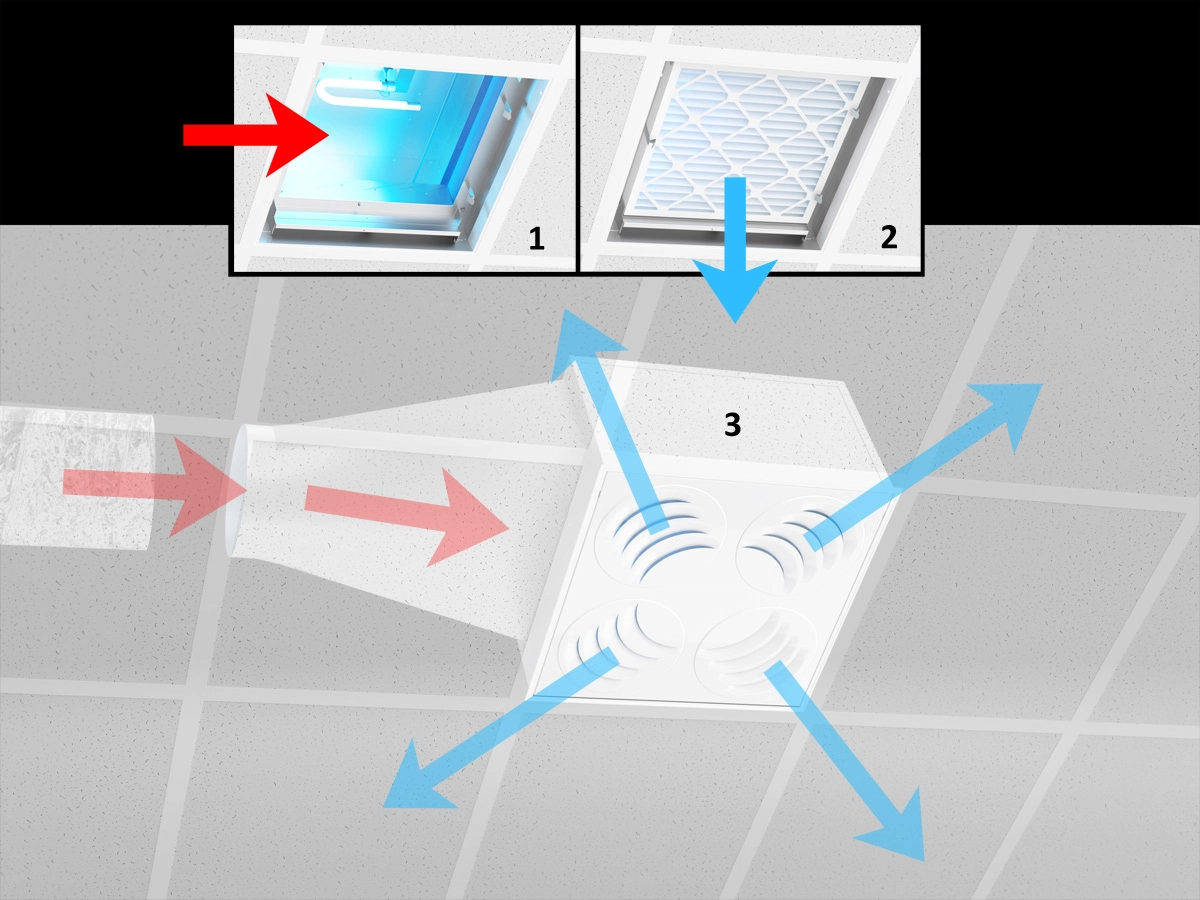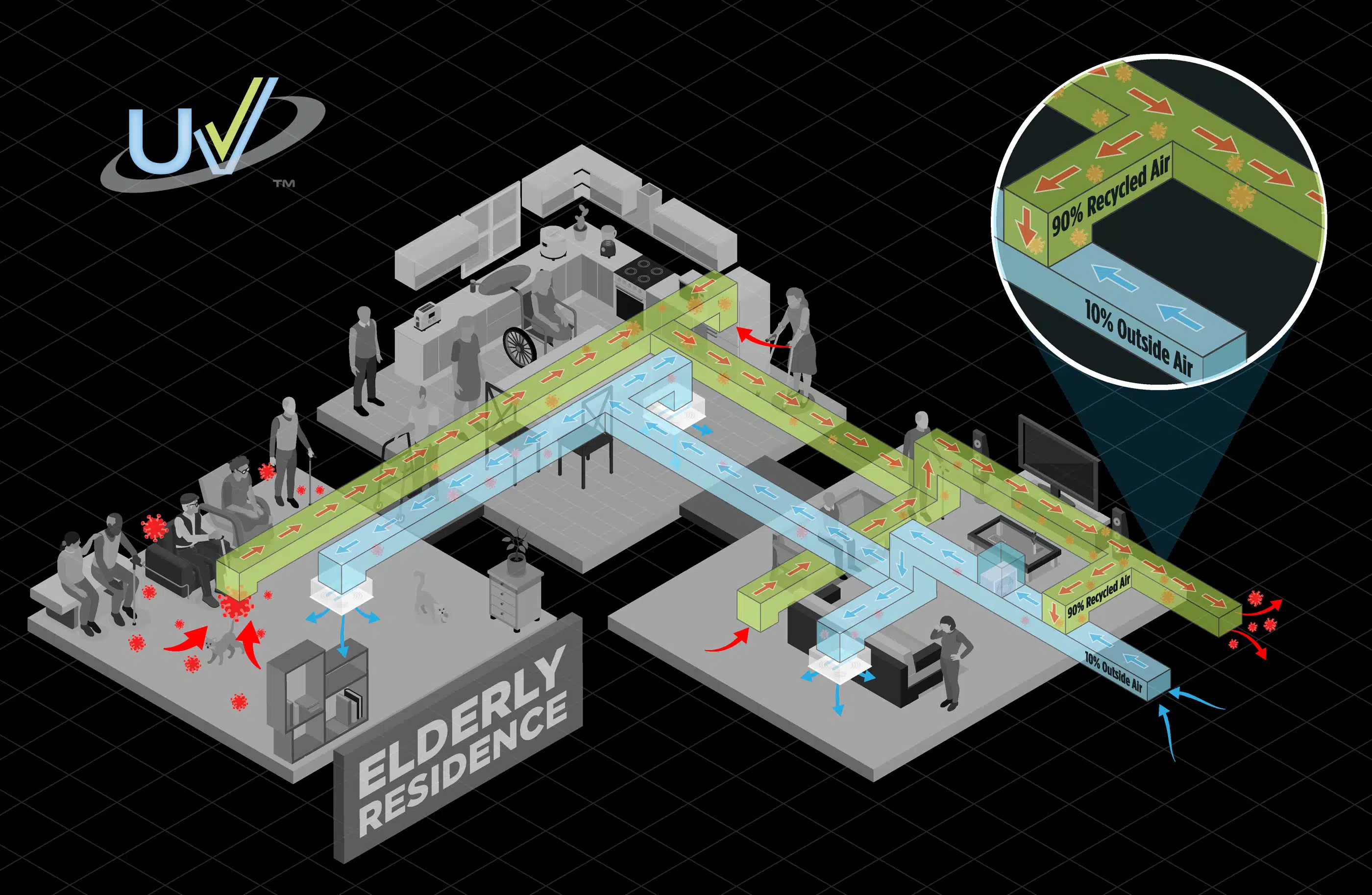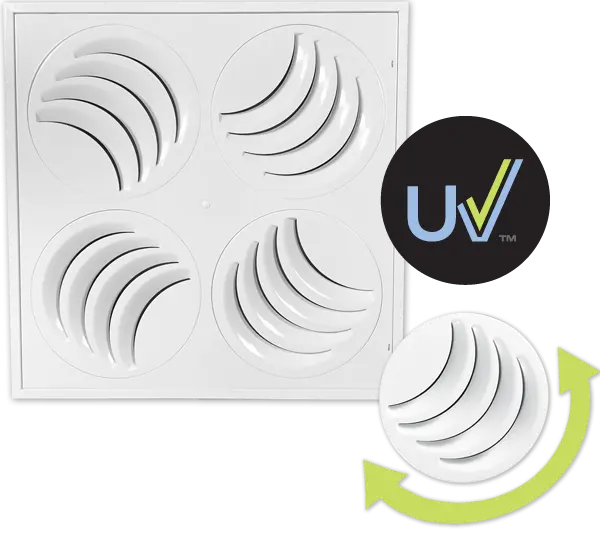Air Quality in Elderly Residences
It is known that stagnant air in a room is unhealthy and that it's important to ventilate buildings.
But did you know that ventilated air in elderly residences is shared among all the floors and rooms within the building?
In fact, the shared air extracted from all of the rooms is recirculated everywhere, spreading contaminants from room to room.
Only a small percentage, about 10%, is rejected and replaced with outside air.
What happens to the other 90% of contaminated air? It's mixed with the small percentage of outside air and redistributed in the building...
Sometimes with insufficient filtration, sometimes without any filtration at all.
In other words, the air our elders breathe in their room is 10% fresh air and 90% used air coming from all other rooms in the building.
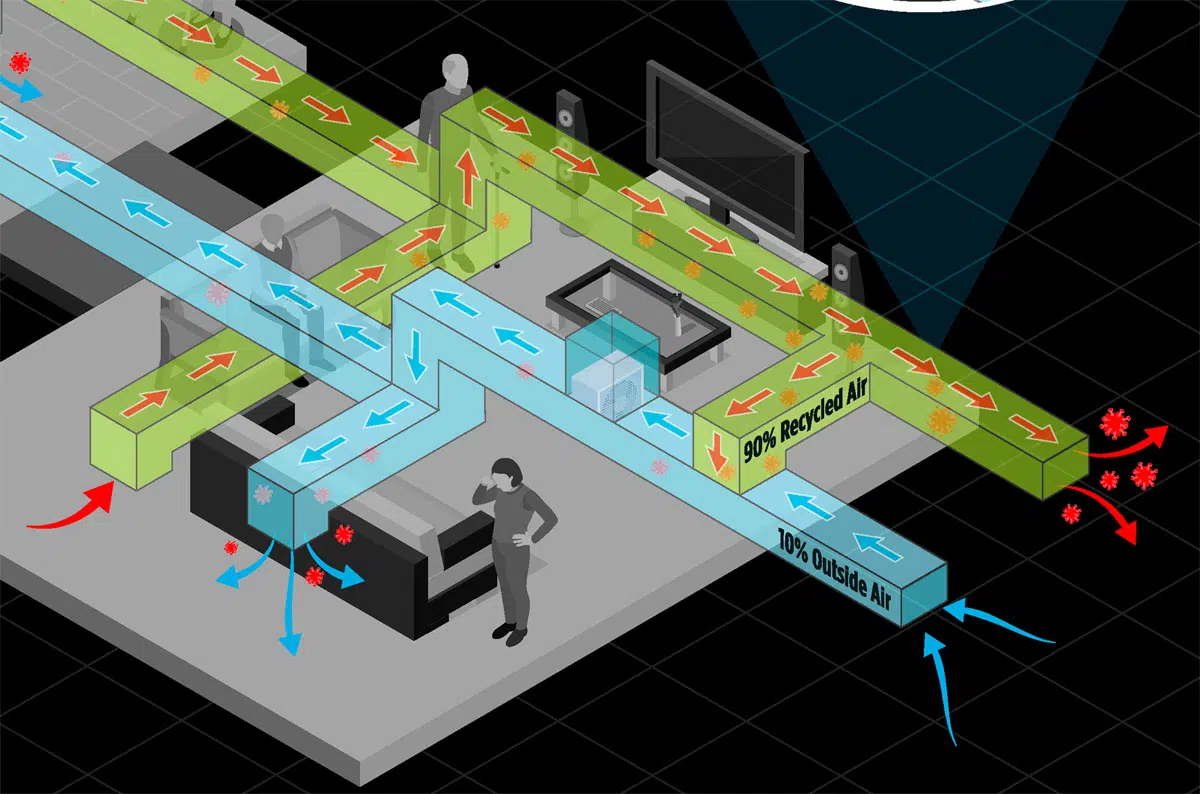
"My residence has CO2 sensors and the readings say our air quality is good"
CO2 detectors in your office might show good readings, because 10% of the CO2 is evacuated four to ten times per hour.
This is enough to maintain a healthy level of CO2 for occupants, but what about for airborne viruses?
Ideally, we don't want to share ANY viruses between rooms, mostly in our elderly residences.
We want to filter and treat the recycled air with the best efficiency possible.
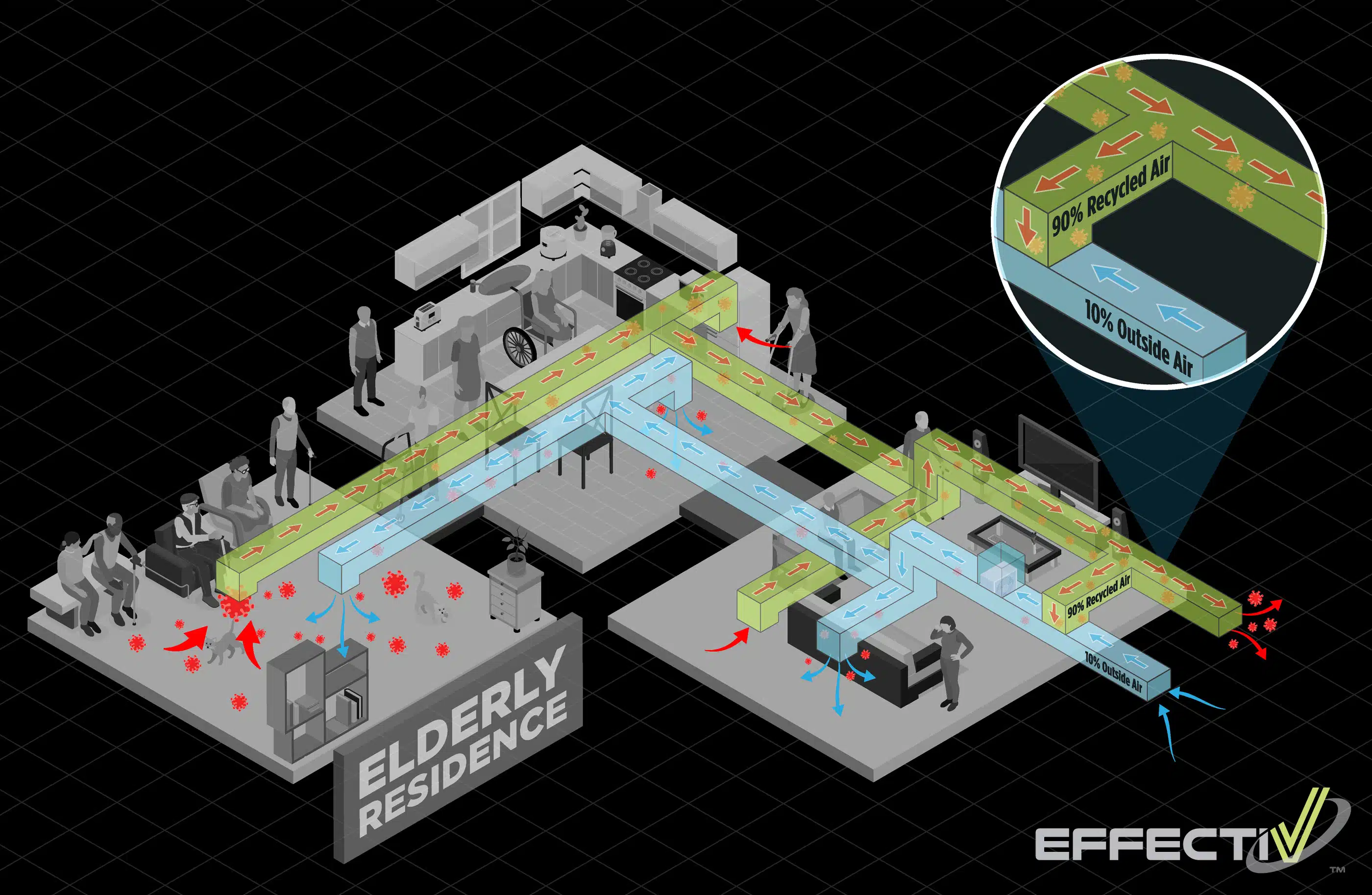
What if the water coming out of your faucet was recycled from the rest of the building without being properly filtered and treated?
Would you drink that water?
And yet that's what we do with the air our elders are breathing.
Knowing this, which of these water filtration systems would you choose to purify your water?

As you can see, increasing the percentage of outside air to 20% or even 50% is not much better despite wasting a lot more energy.
89.93% is the "minimum" recommended by ASHRAE, the CDC and other organizations. Most new buildings use these filters called MERV-13. But is it enough? How can we get closer to 100%?
There are only two ways to treat recycled air before it enters the room: filters and UV-C light. These technologies purify the air INSTANTLY while passing through them.
"What about air purifiers?"
Room air purifiers clean the air inside the room over a period of time but they do not prevent contaminated air from entering the room.
Air purifiers would be the equivalent of putting a small aquarium filtration system in your glass of dirty water and waiting until the water is clean before you drink it.
Unfortunately, you cannot wait until the air is clean before you breathe it.
That is why we created UV Diffusers. They treat the recycled air at the end of the ventilation system, right before it enters the room. They deactivate airborne viruses with UV-C light and they also catch dust, mold spores and other allergens with their filter.
